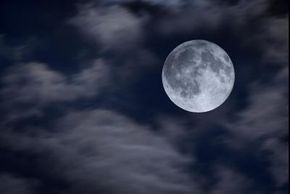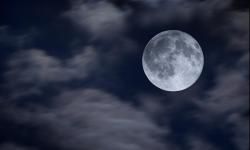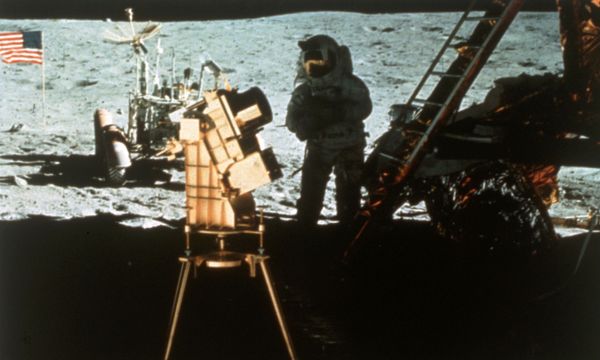It takes about 29 days for the moon to make one complete orbit around the Earth. That's also how long it takes the moon to make one rotation around its axis. Because the moon's rotation and orbit take the same amount of time, we always see the same face of the moon no matter when we look at it. It sounds a bit confusing, but the following animation should help clear things up.
If the moon didn't rotate, we would be able to see all sides of its surface. Likewise, if the moon's rotation were faster or slower, we'd eventually get a glimpse of the entire moon. So why does the moon rotate only once each time it orbits the Earth?
The short answer is gravity. The pull on the moon from the Earth has slowed the moon's rotation down to its current speed. Its rotation is locked with the time it takes to orbit the Earth.
Interestingly, the moon is doing the same thing to the Earth. Ever feel like the days are getting longer? They are. But the change is so gradual you'd never notice it. Still, in a few billion years, the Earth's rotation will match the time it takes the moon to orbit the Earth. By that time, the moon and Earth will have drifted apart from each other a bit, which means it will take a little longer for the moon to travel around the Earth -- to the tune of about 40 days or so. That means that in the future, one Earth day will equal 40 of our current Earth days, or about 960 hours [source: Space.com].
Once the Earth's rotation matches the time it takes for the moon to orbit the Earth, the same side of Earth will face the moon all the time. Does that mean that if you were to travel through time to the future, travel to the right spot on Earth and stare up at the sky you'd always be able to see the moon? The answer is no, and it has to do with the phases of the moon.
A common misconception about the moon is that a new moon occurs when the Earth blocks light from the sun, casting the moon into shadow. In fact, during a new moon the moon is between the sun and the Earth. Imagine that you're in a room that has only one light source shining into it from one side. Someone walks between you and the light source. You wouldn't be able to make out any details, but you could see the person in silhouette. That's exactly what a new moon is.
A full moon is when the Earth is between the moon and the sun. Going back to our example, imagine that you have your back to a light source and someone is standing in front of you. You'd be able to see that person clearly. That's the same as a full moon.
Whether it's a full moon or a new moon, you're still looking at the same side of the moon -- the near side. During a new moon, you're looking at the near side during lunar nighttime. With a full moon, it's the near side's version of noon.
So there's no permanent dark side of the moon, but there is a far side that's still mostly a mystery to us. Because the moon's bulk would block radio signals to and from the Earth, it may be years before engineers come up with a way to explore the far side to a greater extent. We might even start to see NASA and other organizations erect radio relay towers on the moon's surface to make such exploration possible. Until then, we'll have to go loony over the side that faces us.
Want to learn more about the moon and related topics? Moonwalk over to the links on the next page.



